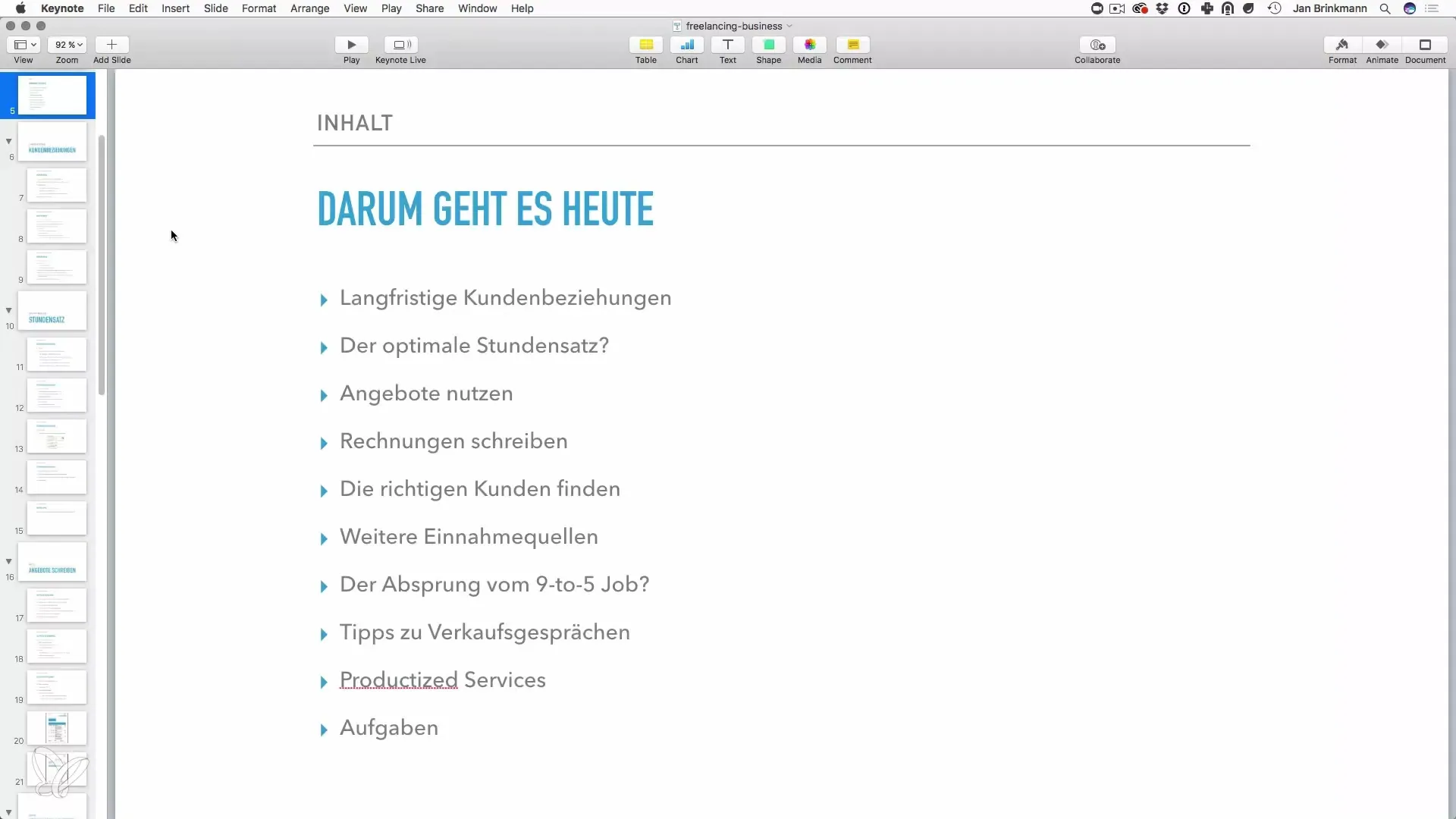Freelancing is much more than just the occasional sale of your skills. It’s about building and maintaining long-term client relationships to establish a sustainable business. In this guide, I will illuminate the crucial steps for a successful startup as a freelancer and share valuable tips on how you can efficiently manage your daily business operations.
Key Insights
A successful freelancing career is based on building long-term client relationships, strategic pricing, and the targeted acquisition of suitable clients. The central aspects include determining your hourly rate, creating appropriate offers and invoices, and exploring various revenue sources.
Step-by-Step Guide
1. Build Client Relationships
To be sustainably successful as a freelancer, building long-term client relationships is essential. You should not only acquire one-time projects but rather create a foundation for follow-up orders and strategic partnerships. Aim to serve your existing clients so well that they remain loyal and recommend you.

2. Set Your Hourly Rate
An important aspect of your freelance activity is determining your hourly rate. Consider what financial goals you want to achieve and what the market is willing to pay. Research similar services to make your price competitive. Remember that your hourly rate underscores your positioning as an expert and should also reflect the nature and complexity of the services offered.
3. Create Offers and Invoices
Creating structured offers and invoices is a regularly recurring step in the freelance daily routine. Make sure that your offers are clearly and understandably formulated and include all important information, such as the description of services, pricing, and payment terms. A professional invoice should also meet all legal requirements to avoid potential payment problems.
4. Find Suitable Clients
The selection of the right clients is crucial for your satisfaction and the long-term success of your business. Work only with clients who align with your worldview and whose projects interest you. This will help you avoid boredom and frustration. Use networks, online platforms, and referrals to acquire suitable clients.
5. Transition from Your 9-to-5 Job
If you are considering working full-time as a freelancer, it is important to develop a plan early on for transitioning from your 9-to-5 job. Set realistic goals and consider when the right time for this step is. Careful planning can help you minimize financial pressure and ensure a smooth transition.
6. Conduct Sales Conversations
Finally, good sales conversations should be part of your routine. You need to be able to convincingly present your value and services to persuade potential clients. Practice these conversations regularly to become more confident. If you are convinced of your skills and offerings, you will be able to convince others as well.
Summary – Succeeding as a Freelancer: A Comprehensive Guide to Starting Your Business
Entering freelancing requires strategic thinking and a focus on long-term client relationships. By clearly defining your hourly rate, selecting suitable clients, and professionally crafting your offers, you can build a sustainable business for yourself. Additionally, plan your transition from employment and practice your sales conversations to maximize your chances of success.
Frequently Asked Questions
How do I build long-term client relationships?By taking good care of existing clients and communicating regularly.
How do I determine my hourly rate?Research the market, set realistic financial goals, and consider your services.
What should an offer include?A clear description of services, pricing, and payment terms.
How do I find suitable clients?Use networks, online platforms, and referrals to identify your ideal client base.
When is the right time to transition from the 9-to-5?This depends on your planning; set realistic goals and look at your financial situation.


